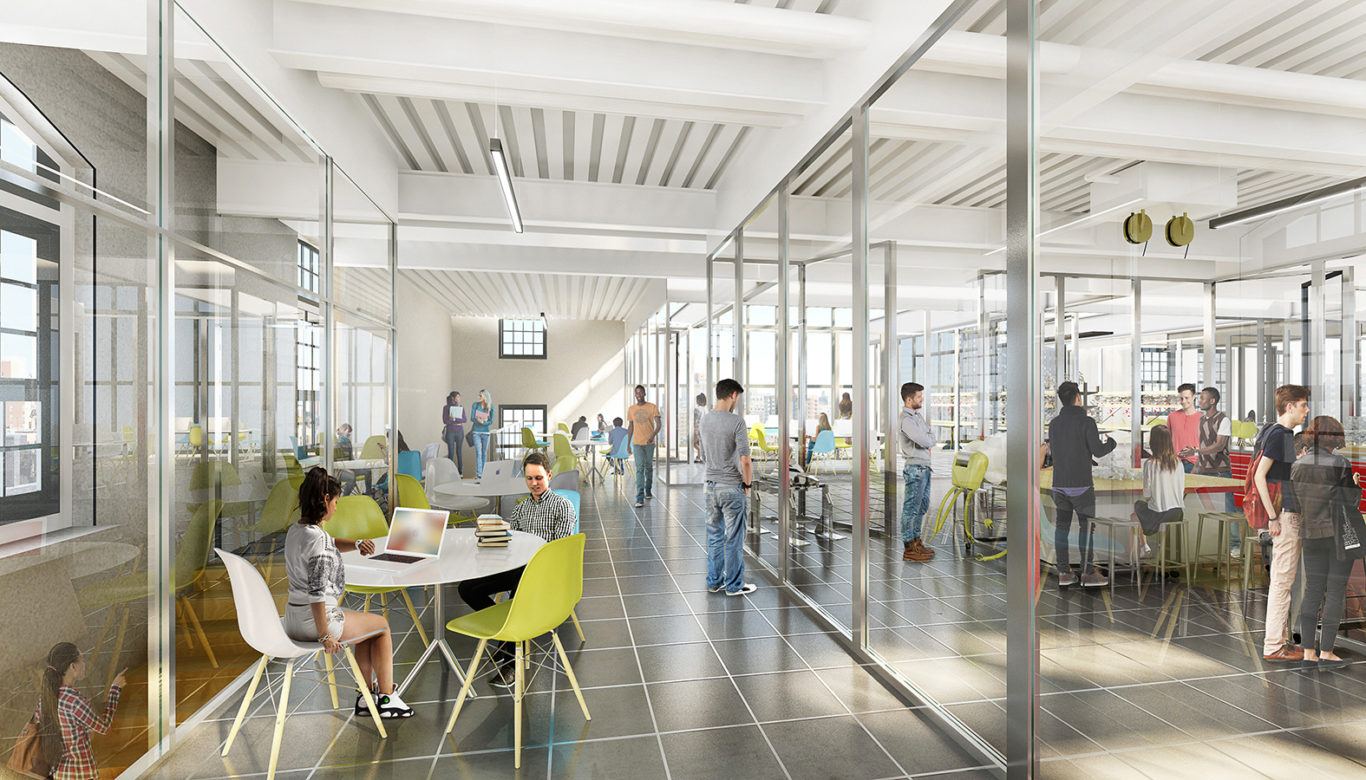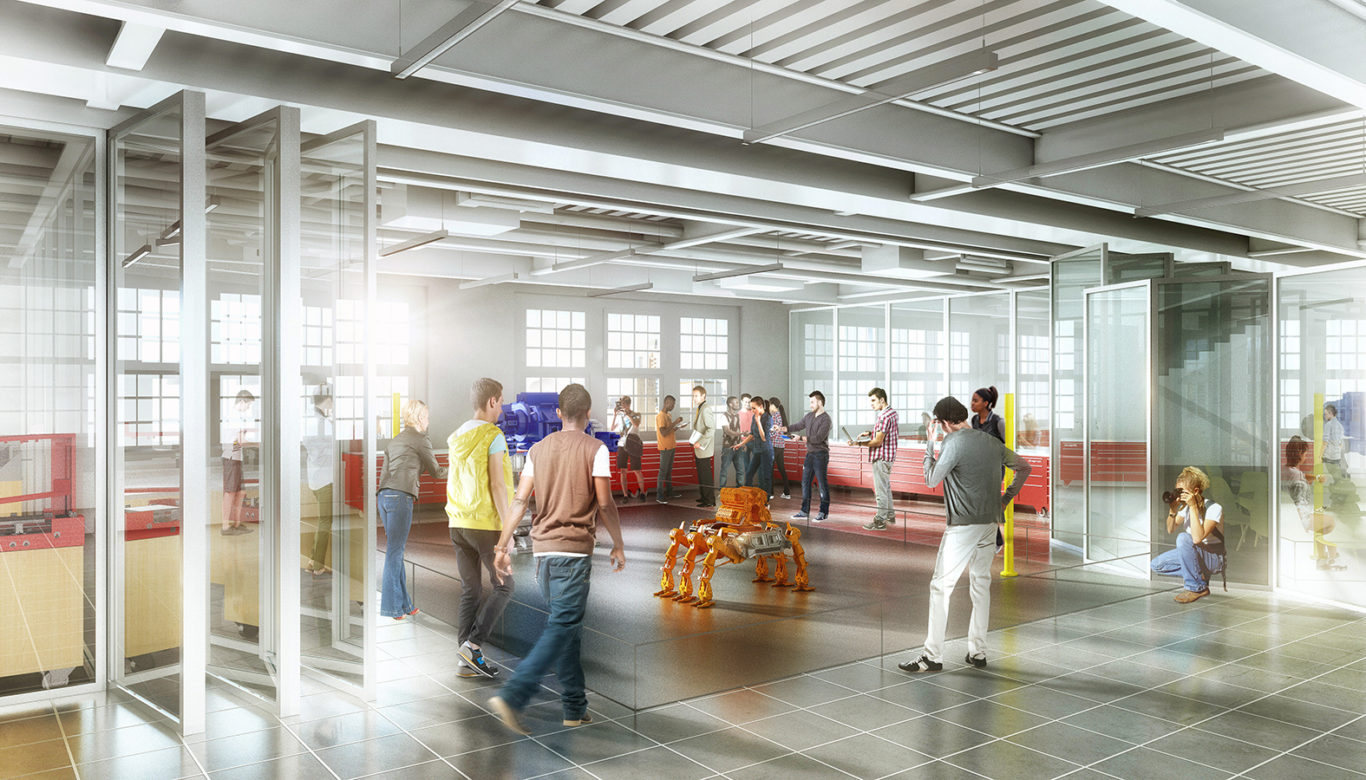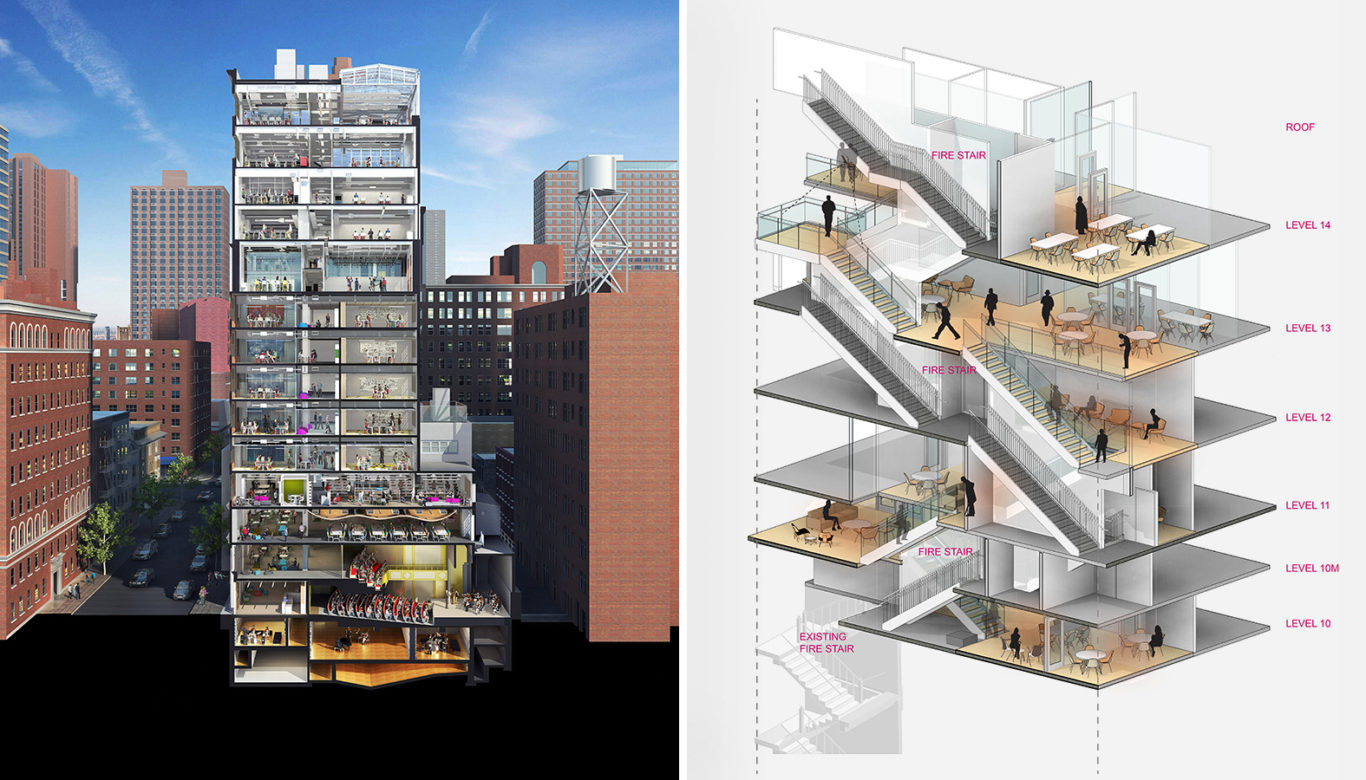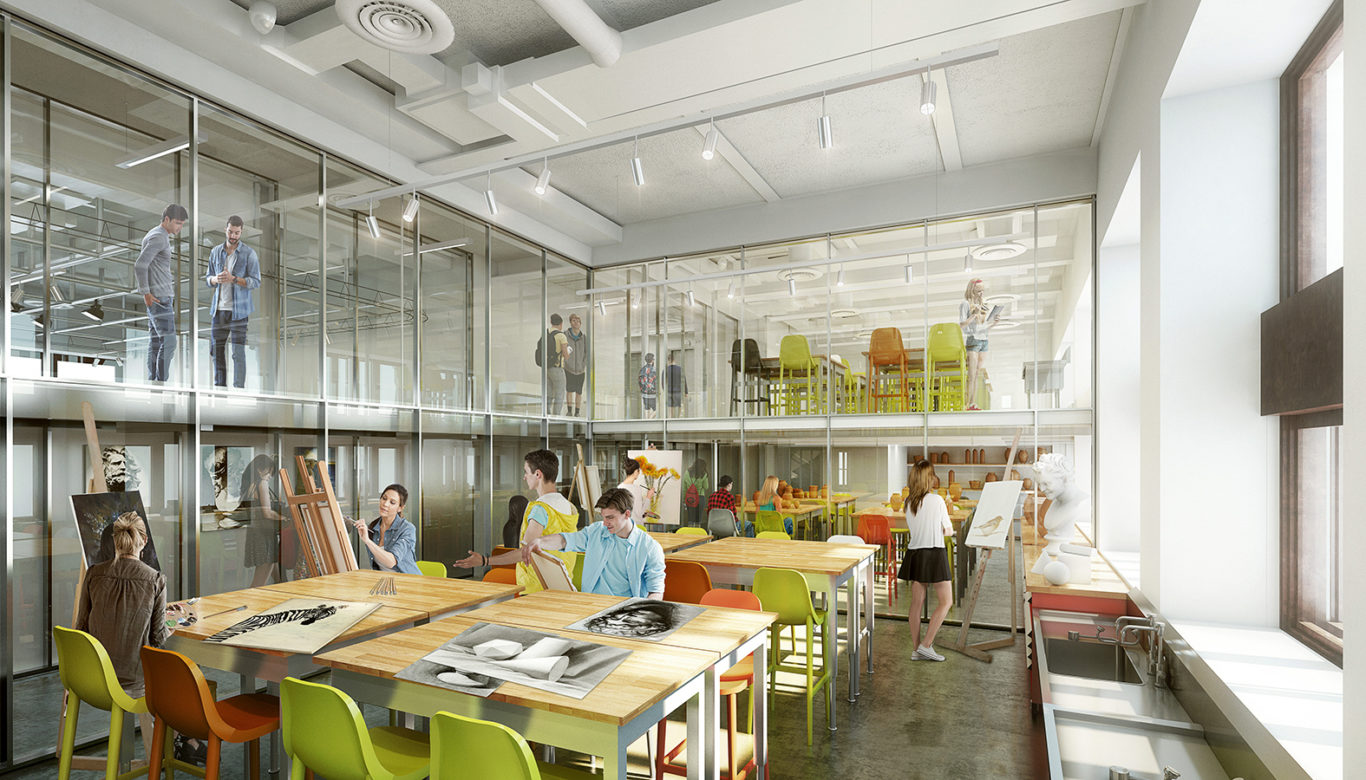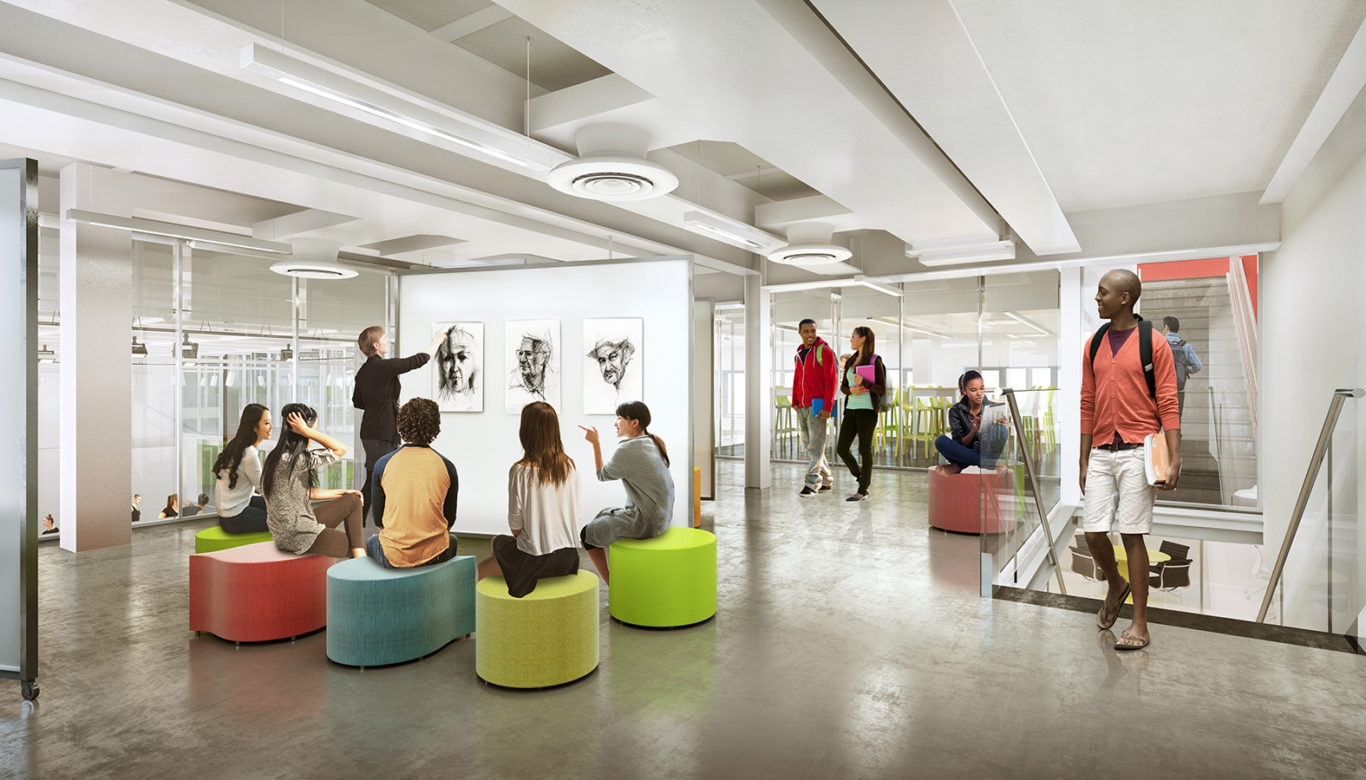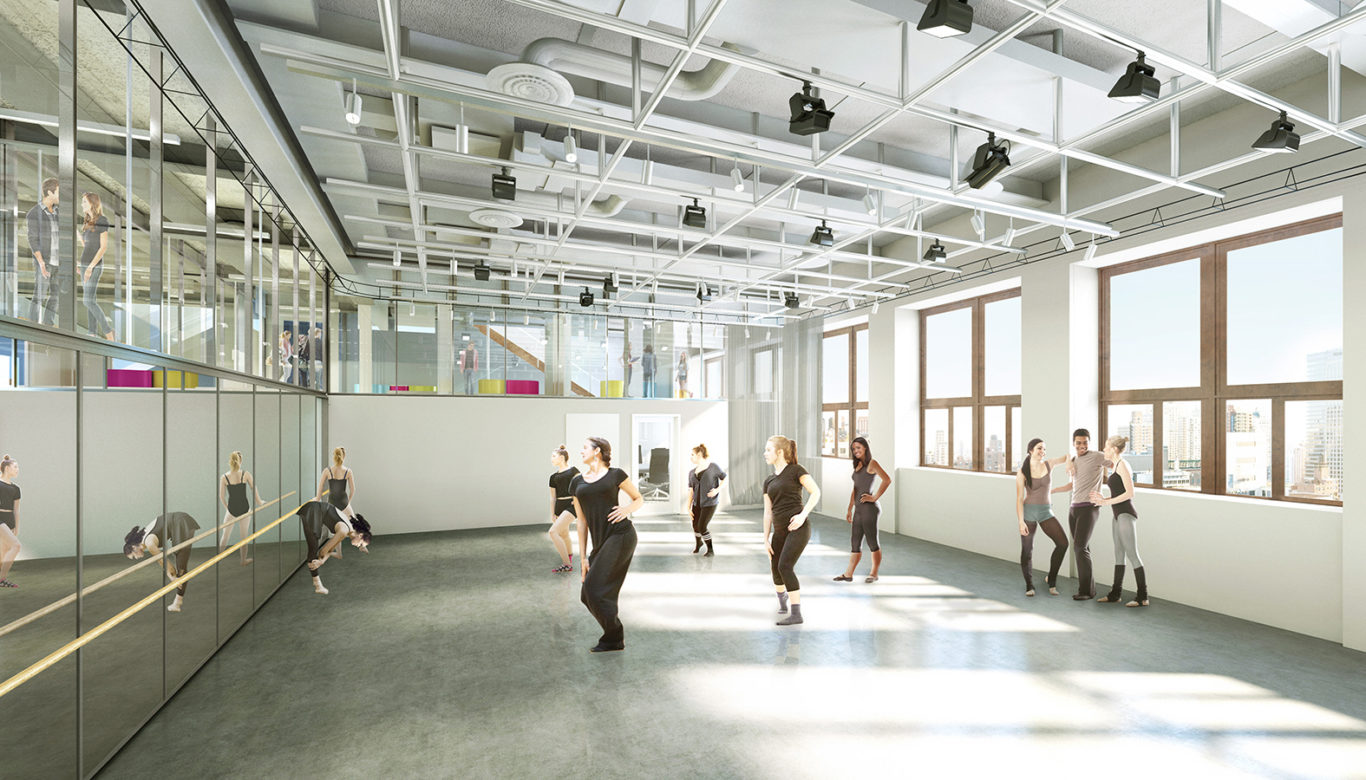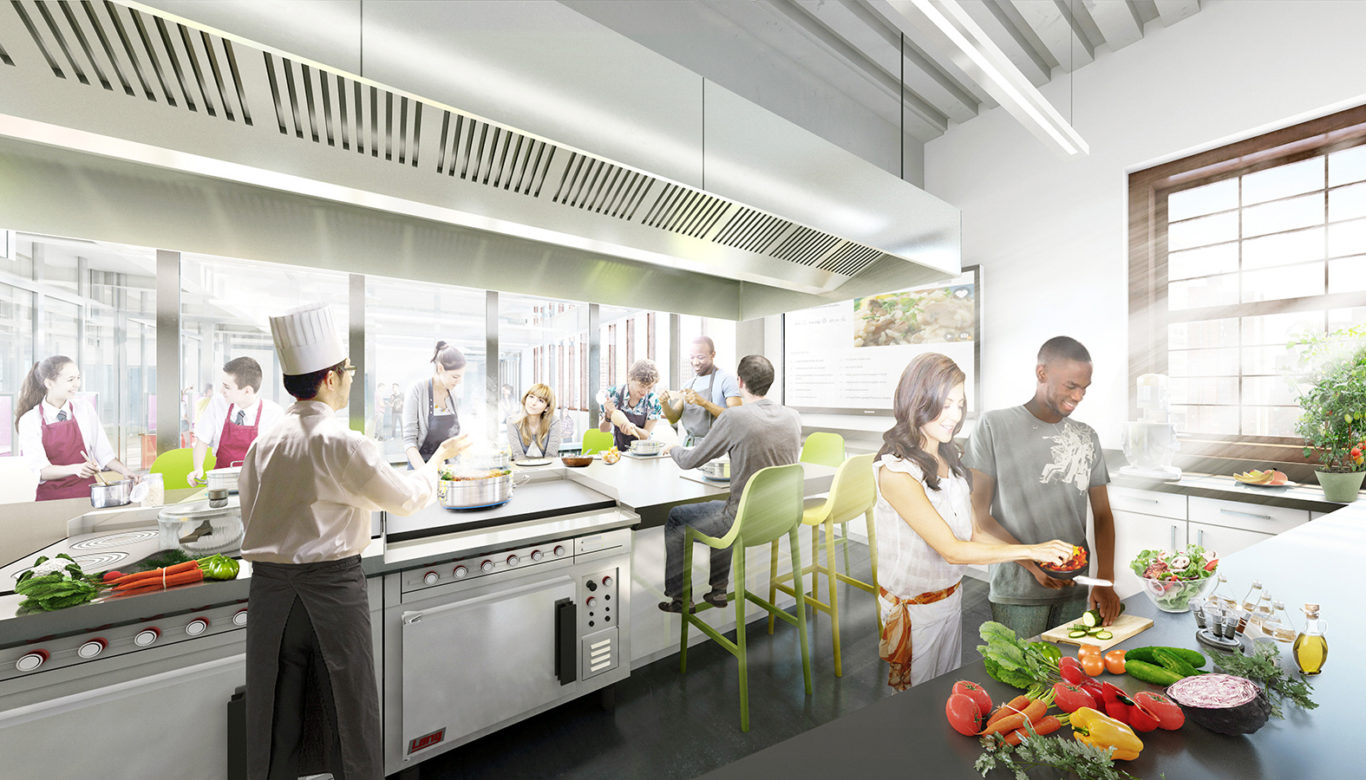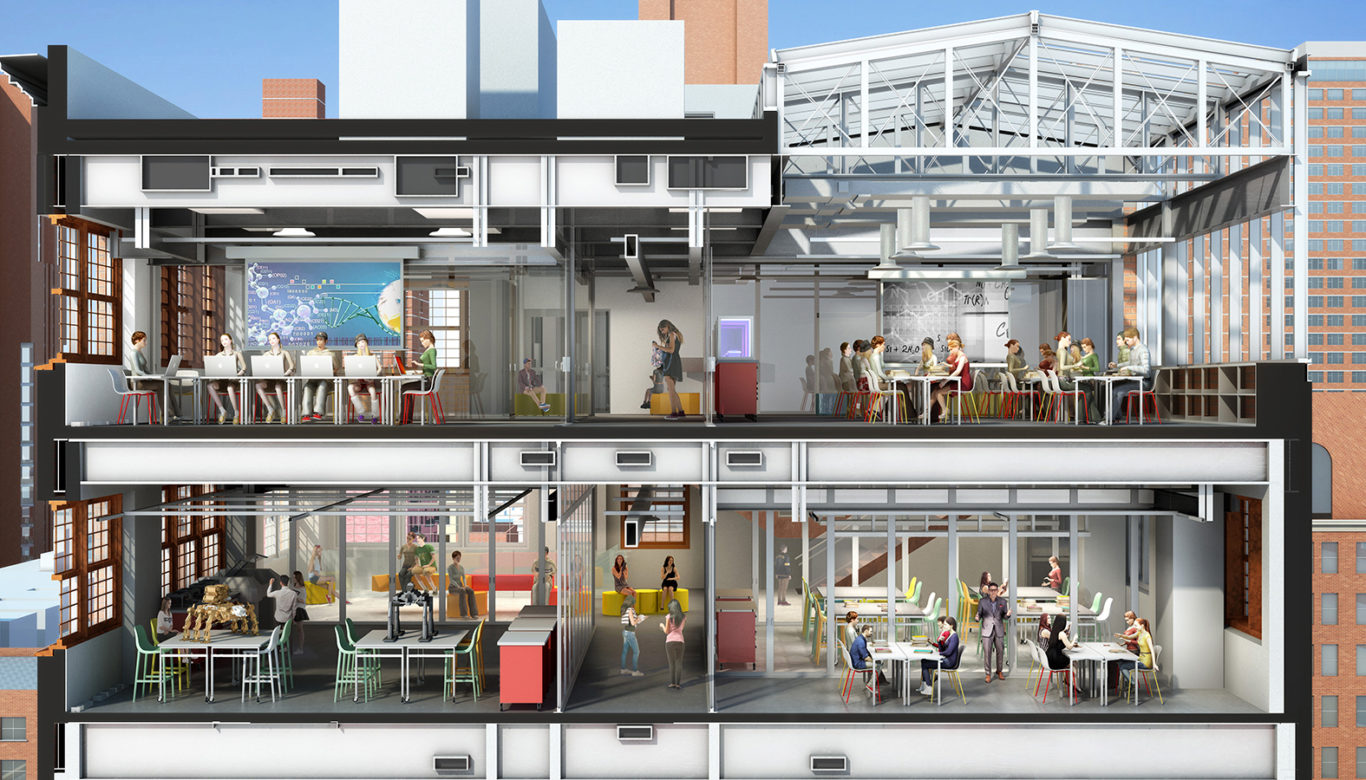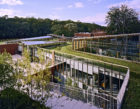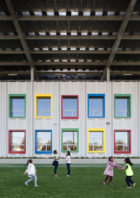Celebrating 100 years of innovative student-centered learning, the Dalton School is reimagining itself for the 21st century. SOM has partnered with this premier, coeducational K-12 school to more deeply connect its physical spaces to the pedagogical foundation established by Helen Parkhurst in 1919.
The project centers on a two-story rooftop expansion to the existing 12-story 89th Street building, and includes select renovations to Dalton’s library, art, dance, science, and arrival spaces. The new STEAM Center (Science, Technology, Engineering, Art and Mathematics) will provide flexible open spaces for meetings, teaching, research, and events. SOM’s design creates spaces for project-based, interdisciplinary, experiential teaching and learning. It enables the school to build upon the success of its programs in science and technology, including robotics.
With an eye toward advancing Dalton’s mission, the master plan organizes the building into three programmatic groups. The Interdisciplinary Hub, located atop the STEAM Center, is designed to promote dialogue and collaboration. The Academic Core, the mid-section of the building, is the hive of instructional space for both middle and high school students. At the base, the Student Resources section includes the relocated library and a renovated lobby, with enhanced security, along with informal meeting spaces, the cafeteria, a theater, and music rooms.
The forward-looking design encourages interaction and chance encounters between students and faculty, and among disciplines. A new communicating staircase, informal nooks, and pockets of seating create new environments for social engagement and learning outside of the classroom. Movable classroom walls encourage a range of scales of creativity and exploration. Potential curricular innovations are boundless with the addition of a robotics field, a prototyping space, an engineering lab, computer science and digital media rooms, a nutritional science kitchen, a greenhouse, glass-enclosed art studios, and a dance studio that doubles as a black-box theater. Woven through the building’s 14 floors are various spaces to display the work of students and faculty.
In founding the school, Parkhurst called on Dalton to be progressive and innovative, adapting to serve students in imaginative new ways. SOM’s design supports the school’s historical commitment to the humanities, sciences, and visual and performing arts, while at the same time promoting innovation and emerging disciplines. By balancing holistic design and functional needs—along with a firm commitment to educational innovation—we celebrate Dalton’s legacy and centennial.
